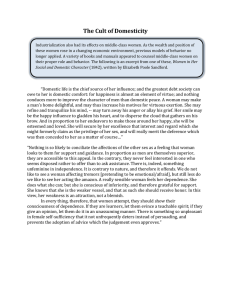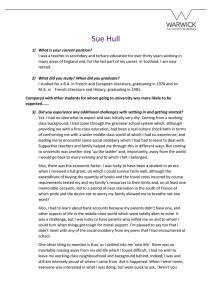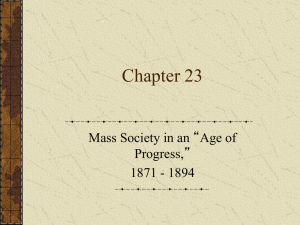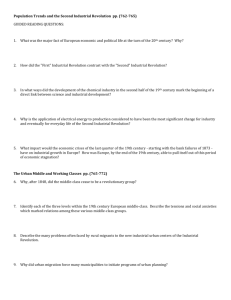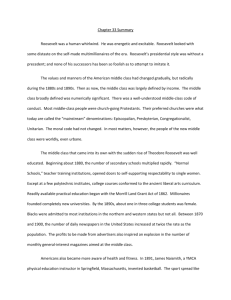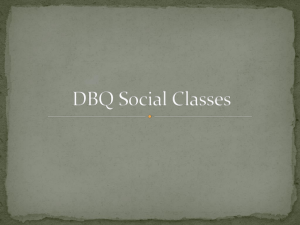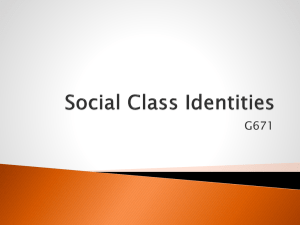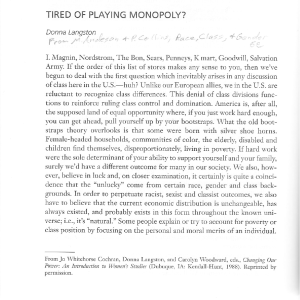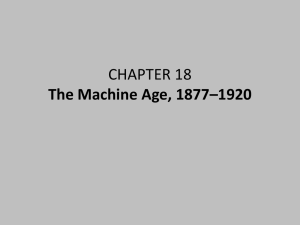the second industrial revolution (1850- 1914) - SMiguel
advertisement
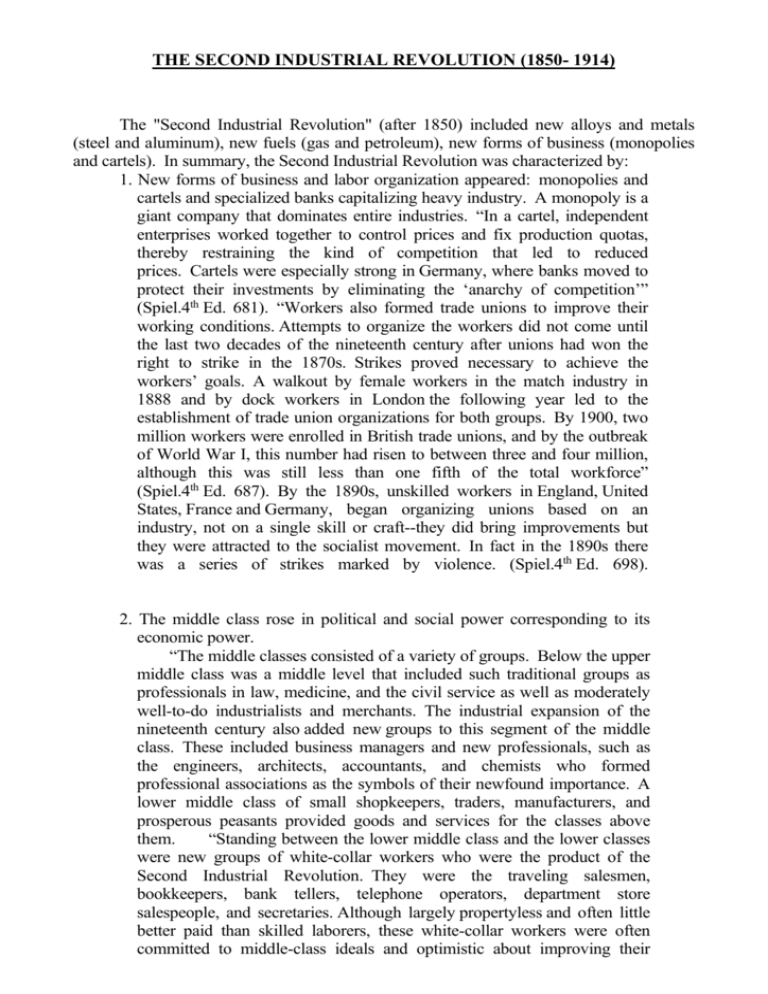
THE SECOND INDUSTRIAL REVOLUTION (1850- 1914) The "Second Industrial Revolution" (after 1850) included new alloys and metals (steel and aluminum), new fuels (gas and petroleum), new forms of business (monopolies and cartels). In summary, the Second Industrial Revolution was characterized by: 1. New forms of business and labor organization appeared: monopolies and cartels and specialized banks capitalizing heavy industry. A monopoly is a giant company that dominates entire industries. “In a cartel, independent enterprises worked together to control prices and fix production quotas, thereby restraining the kind of competition that led to reduced prices. Cartels were especially strong in Germany, where banks moved to protect their investments by eliminating the ‘anarchy of competition’” (Spiel.4th Ed. 681). “Workers also formed trade unions to improve their working conditions. Attempts to organize the workers did not come until the last two decades of the nineteenth century after unions had won the right to strike in the 1870s. Strikes proved necessary to achieve the workers’ goals. A walkout by female workers in the match industry in 1888 and by dock workers in London the following year led to the establishment of trade union organizations for both groups. By 1900, two million workers were enrolled in British trade unions, and by the outbreak of World War I, this number had risen to between three and four million, although this was still less than one fifth of the total workforce” (Spiel.4th Ed. 687). By the 1890s, unskilled workers in England, United States, France and Germany, began organizing unions based on an industry, not on a single skill or craft--they did bring improvements but they were attracted to the socialist movement. In fact in the 1890s there was a series of strikes marked by violence. (Spiel.4th Ed. 698). 2. The middle class rose in political and social power corresponding to its economic power. “The middle classes consisted of a variety of groups. Below the upper middle class was a middle level that included such traditional groups as professionals in law, medicine, and the civil service as well as moderately well-to-do industrialists and merchants. The industrial expansion of the nineteenth century also added new groups to this segment of the middle class. These included business managers and new professionals, such as the engineers, architects, accountants, and chemists who formed professional associations as the symbols of their newfound importance. A lower middle class of small shopkeepers, traders, manufacturers, and prosperous peasants provided goods and services for the classes above them. “Standing between the lower middle class and the lower classes were new groups of white-collar workers who were the product of the Second Industrial Revolution. They were the traveling salesmen, bookkeepers, bank tellers, telephone operators, department store salespeople, and secretaries. Although largely propertyless and often little better paid than skilled laborers, these white-collar workers were often committed to middle-class ideals and optimistic about improving their status. Some even achieved professional standing and middle-class status” (Spiel.4thEd. 693). 3. Traditional groups or classes declined: artisans and peasantry were replaced by skilled factory workers and machines. 4. The roles of women and children changed: higher wages for skilled male workers allowed females to stay home and children to become students. “Between 1890 and 1914, however, family patterns among the working class began to change. High-paying jobs in heavy industry and improvements in the standard of living made it possible for working-class families to depend on the income of husbands and the wages of grown children. By the early twentieth century, some working-class mothers could afford to stay at home, following the pattern of middle-class women” “Men provided the family income while women focused on household and child care. The use of domestic servants in many middle-class homes, made possible by an abundant supply of cheap labor, reduced the amount of time middle-class women had to spend on household work. At the same time, by reducing the number of children in the family, mothers could devote more time to child care and domestic leisure . “...Recent research indicates that in France, Germany, and even midVictorian Britain, relatively few families could actually afford to hire a host of servants. More often, middle-class families had one servant, usually a young working-class or country girl not used to middle-class lifestyles. Women, then, were often forced to work quite hard to maintain the expected appearance of the well-ordered household” . In the educational systems, “Girls did less math and no science but concentrated on such domestic skills as sewing, washing, ironing, and cooking, all prerequisites for providing a good home for husband and children” . 5. Technology advanced in industry: engineers and scientists are hired to apply inventions and scientific discoveries to industrial production. “After 1870, the relationship of science and technology grew closer. Newer fields of industrial activity, such as organic chemistry and electrical engineering, required more scientific knowledge than the commonsense tinkering once employed by amateur inventors. Companies began to invest capital in laboratory equipment for their own research or hired scientific consultants for advice” From socsci.gulfcoast.edu/rbaldwin/2NDINDUS.NT2.htm
